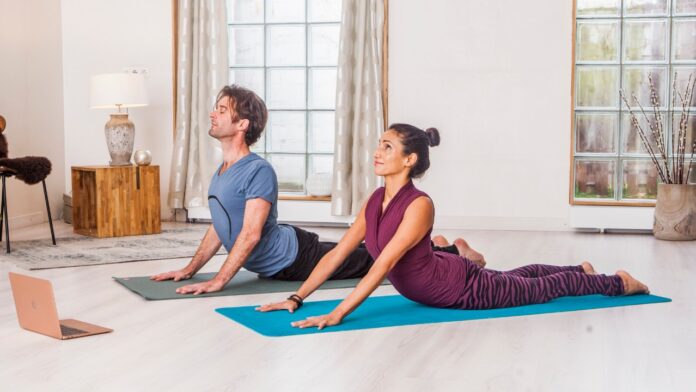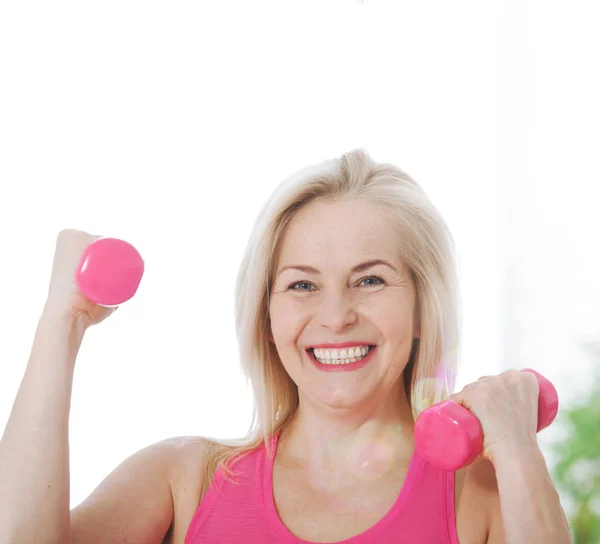The practice of yoga, a discipline that harmonizes the body, mind, and spirit, has a rich and profound history that spans thousands of years. Originating in ancient India, yoga was initially a spiritual practice, a path to enlightenment. The word ‘yoga’ itself, derived from the Sanskrit root ‘Yuj’, means to join or unite, symbolizing the union of body and consciousness.
Over time, yoga evolved, incorporating physical postures (asanas), breath control (pranayama), and meditation (dhyana). It was not until the late 19th and early 20th centuries that yoga began to gain recognition in the Western world. Today, yoga is recognized globally for its numerous health benefits, including stress relief, improved flexibility and strength, and enhanced mental clarity.
Despite its widespread popularity, the essence of yoga remains the same – it is a journey of self-discovery, a path to transcendence beyond the physical realm, and a practice that promotes overall well-being.
Overview of the Article
In this comprehensive guide, we will delve into various aspects of practicing yoga at home. We will begin with ‘Beginner Yoga’, providing insights into the basics of yoga and how beginners can start their yoga journey at home. We will then explore ‘Yoga for Stress Relief’, discussing how yoga can be a powerful tool in managing stress and promoting mental peace.
As we progress, we will discuss ‘Yoga for Seniors’, highlighting the importance of yoga for seniors and how it contributes to healthy aging. ‘Prenatal Yoga’ will be our next focus, where we will discuss the benefits of yoga during pregnancy and provide a guide on safe prenatal yoga practices.
Further, we will delve into ‘Yoga for Weight Loss’, discussing how yoga can support weight loss and overall fitness. Lastly, we will explore ‘Yoga for Lower Back Pain’, providing insights into how yoga can help manage lower back pain and promote spine health.
This article aims to provide a comprehensive and informative guide on practicing yoga at home. Whether you are a beginner or an experienced practitioner, this guide will serve as a valuable resource in your yoga journey. So, let’s embark on this enlightening journey of yoga together.
Beginner Yoga
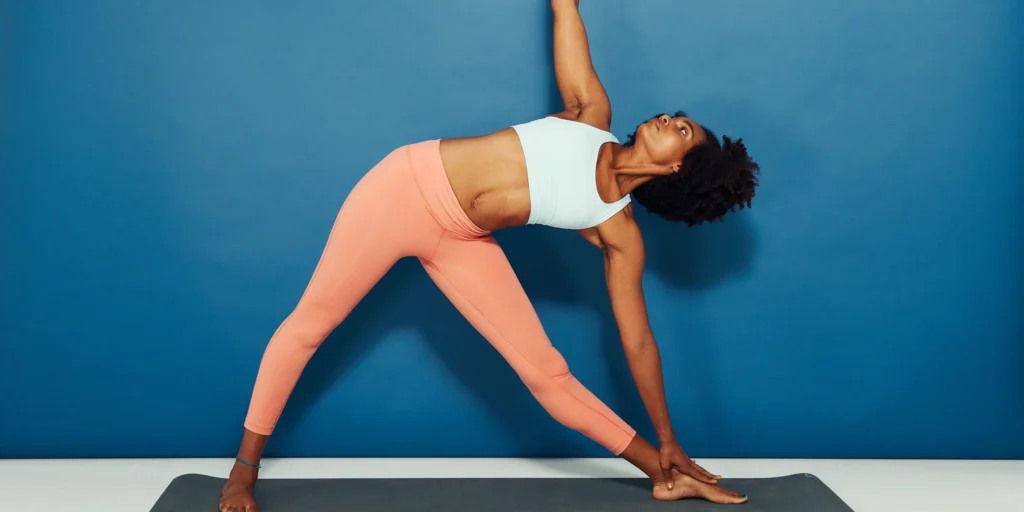
Understanding Yoga
Yoga, a practice that originated in ancient India over 5,000 years ago, is a holistic discipline that unifies the mind, body, and spirit. The term ‘Yoga’ is derived from the Sanskrit word ‘Yuj’, which means to join or unite. This signifies the union of individual consciousness with universal consciousness, leading to a state of perfect harmony.
The practice of yoga is not merely about bending and twisting the body or holding the breath. It is a mechanism to bring you into a state that you naturally are. The most fundamental nature of life, including yours, is harmony and peace. Yoga is a step-by-step process to bring you to this natural experiential state of peace and bliss.
Yoga offers numerous benefits, both physical and mental. Physically, it enhances flexibility, strength, coordination, and body awareness. Mentally, it encourages a sense of calm, relaxes the mind, and aids in concentration. Regular practice of yoga can also help manage stress, anxiety, and other mental health issues.
Starting Yoga at Home
Starting a yoga practice at home can be a rewarding experience. Here are some steps to guide you:
Setting Up a Yoga Space: Choose a quiet, well-ventilated space in your home. It should be free from distractions and have enough room for you to stretch out in all directions. You might want to decorate it with items that create a peaceful, serene atmosphere, like candles, incense, or calming artwork.
Choosing the Right Time: The best time for practicing yoga is early in the morning or late in the evening. However, the most important thing is to choose a time when you’re most likely to be undisturbed and when you can regularly dedicate time to practice.
Getting the Necessary Equipment: The basic equipment needed for yoga is a yoga mat. Choose a mat that is non-slip and thick enough to provide cushioning for your joints. Other optional equipment includes yoga blocks, straps, or a yoga blanket.
Yoga Poses for Beginners
Here are some beginner-friendly yoga poses to get you started:
Mountain Pose (Tadasana): This pose helps to improve posture, balance, and calm focus.
Downward-Facing Dog (Adho Mukha Svanasana): This pose strengthens the arms and legs, stretches the hamstrings, shoulders, and calves, and restores energy.
Warrior II (Virabhadrasana II): This pose strengthens the legs, opens the hips and chest, and develops concentration, balance, and groundedness.
Tree Pose (Vrikshasana): This pose improves balance, strengthens the legs, and instills confidence.
Bridge Pose (Setu Bandhasana): This pose stretches the chest, neck, and spine, calms the brain, and rejuvenates tired legs.
Remember, yoga is not about touching your toes or stretching 98 degrees to the northeast. It’s about what you learn on the way down. So, take your time, enjoy the journey, and most importantly, listen to your body. Namaste.
Yoga for Stress Relief
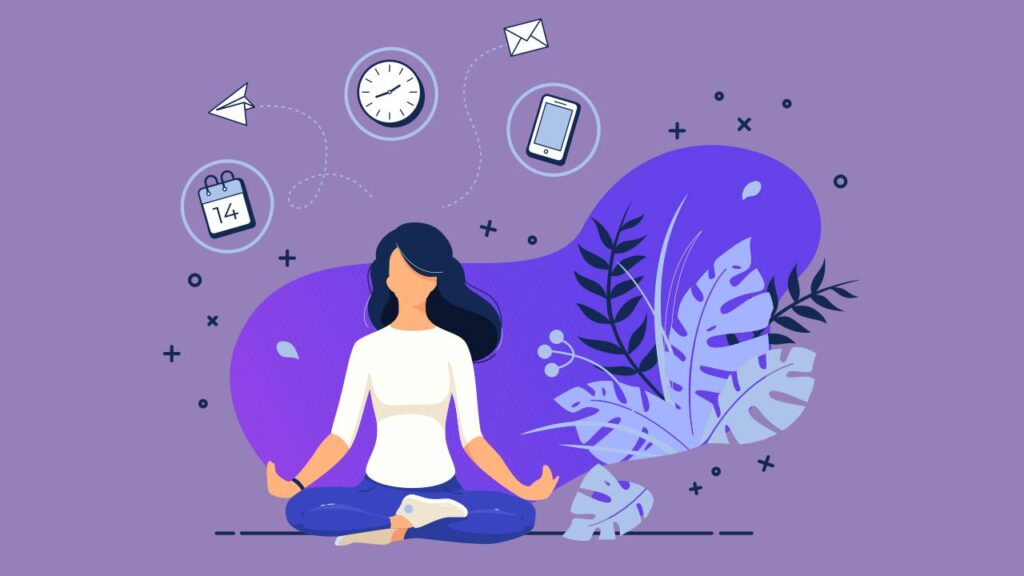
The Impact of Stress on Health
Stress, a common phenomenon in today’s fast-paced world, is a body’s method of reacting to a challenge or demand. It is often triggered by an event that makes you feel frustrated or nervous. Stress can be beneficial in short bursts, helping you avoid danger or meet a deadline. However, when stress becomes chronic, it can have serious health implications.
Chronic stress can lead to various health problems, including mental health disorders like depression and anxiety, cardiovascular disease, digestive problems, weakened immune systems, and sleep disturbances. It can also lead to unhealthy behaviors like overeating or undereating, alcohol or drug abuse, and social withdrawal.
Yoga, an ancient practice with its roots in Indian philosophy, has been found to be an effective way to manage stress and promote mental well-being. It incorporates physical postures, breath control, and meditation, which work together to relax the body, calm the mind, and enhance mood. Regular practice of yoga can help reduce stress levels, improve mood, and enhance overall quality of life.
Yoga Poses for Stress Relief
Here are some yoga poses that are particularly effective for stress relief:
Child’s Pose (Balasana): This pose helps to calm the brain and relieve stress and fatigue. To do this pose, kneel on the floor, touch your big toes together, and sit on your heels. Then separate your knees about as wide as your hips exhale, and lay your torso down between your thighs.
Corpse Pose (Savasana): This pose promotes relaxation and can help to reduce blood pressure, insomnia, and anxiety. To do this pose, lie flat on your back with your arms and legs spread at about 45 degrees, close your eyes, and breathe deeply.
Legs-Up-The-Wall Pose (Viparita Karani): This pose can help to quiet the mind and relieve mild backache. To do this pose, sit next to a wall and swing your legs up onto the wall as you lay down on your back, keeping your arms by your sides.
Seated Forward Bend (Paschimottanasana): This pose can help to relieve stress and reduce fatigue. To do this pose, sit on the floor with your legs extended in front of you, inhale as you raise your arms overhead, and then exhale as you bend forward from the hip joints.
Creating a Stress Management Routine with Yoga
Creating a daily yoga routine can be a powerful way to manage stress. Here are some tips to get you started:
Choose a Convenient Time and Place: Practice yoga at a time and place that is most convenient for you. Many people find it helpful to practice yoga first thing in the morning, but if another time of day works better for you, that’s fine too.
Start with Short Sessions: If you’re new to yoga, start with short sessions of about 10-15 minutes each day. As your flexibility and stamina improve, you can gradually extend your practice time.
Listen to Your Body: It’s important to listen to your body and not push yourself too hard. If a pose feels uncomfortable or painful, adjust it or skip it completely. Remember, the goal of yoga is to feel better, not to push yourself to the point of pain or discomfort.
Include a Variety of Poses: Your yoga routine should include a variety of poses to ensure that you are stretching and strengthening all parts of your body. Be sure to include a mix of standing poses, seated poses, and relaxation poses.
End with Relaxation: End your yoga session with a period of relaxation. This could be a simple corpse pose (Savasana) or a few minutes of mindful meditation. This will help your body and mind to fully absorb the benefits of your practice.
Remember, the most important thing is to make your yoga practice a regular part of your life. Even a few minutes of yoga each day can help to reduce stress and boost your mood. So roll out your yoga mat and get started! Namaste.
Yoga for Seniors
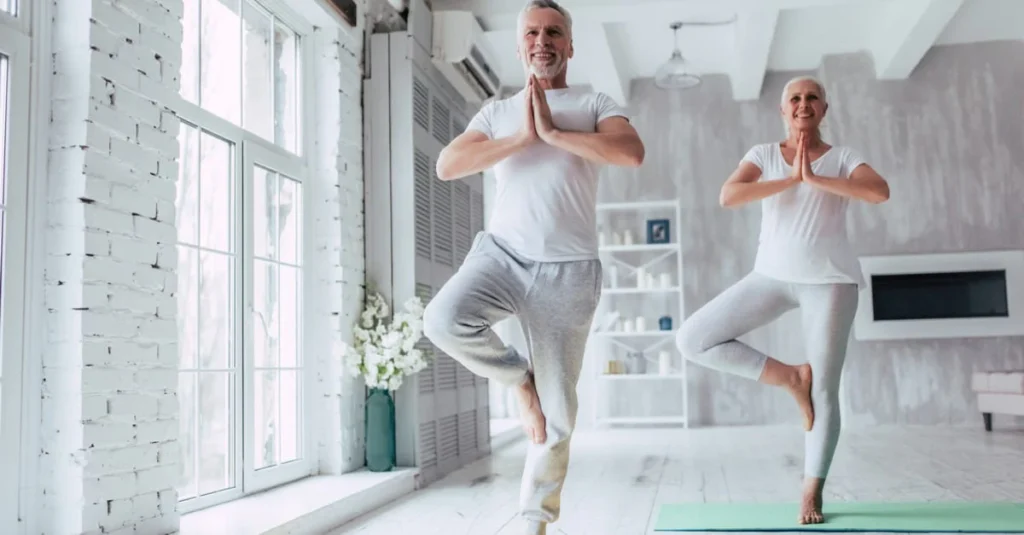
The Benefits of Yoga for Seniors
As we age, maintaining an active lifestyle becomes more important than ever. Regular exercise, such as yoga, can boost energy, maintain your independence, and manage symptoms of illness or pain. Yoga, in particular, can be an excellent choice as it provides a holistic workout that is gentle on the joints yet effective in keeping the body healthy and the mind calm.
Yoga offers numerous benefits for seniors. Physically, it enhances flexibility, strength, and balance, which can help prevent falls, a common concern for older adults. It also promotes cardiovascular health, aids digestion, and improves sleep patterns.
Mentally, yoga can help seniors deal with feelings of anxiety and depression. The meditative aspects of yoga can help improve mental clarity and cognitive function, reducing the risk of Alzheimer’s and other cognitive disorders.
Socially, joining a yoga class can provide a sense of community and promote social interaction, which is vital for seniors who may often feel isolated.
Yoga Poses for Seniors
Here are some yoga poses that are particularly beneficial for seniors:
Chair Pose (Utkatasana): This pose strengthens the thighs and ankles, while toning the shoulders, hips, and back. It stretches the Achilles tendons and shins and is therapeutic for flat feet. It also stimulates the abdominal organs, diaphragm, and heart.
Warrior II (Virabhadrasana II): This pose strengthens the legs and ankles while stretching the groins, chest and lungs, and shoulders. It stimulates abdominal organs and increases stamina. It is therapeutic for carpal tunnel syndrome, flat feet, infertility, osteoporosis, and sciatica.
Tree Pose (Vrikshasana): This pose strengthens thighs, calves, ankles, and spine, and stretches the groins and inner thighs, chest, and shoulders. It improves the sense of balance, and relieves sciatica, and reduces flat feet.
Cobra Pose (Bhujangasana): This pose strengthens the spine, and stretches the chest and lungs, shoulders, and abdomen. It firms the buttocks and relieves stress and fatigue. It can be therapeutic for asthma, and sciatica, and can soothe sciatica.
Remember to consult with a healthcare provider before starting any new exercise regimen, including yoga.
Creating a Healthy Aging Routine with Yoga
Incorporating yoga into your daily routine can be a rewarding experience that enhances your quality of life as you age. Here are some tips to get started:
Start Slow: If you’re new to yoga, start with gentle poses and gradually move on to more challenging ones as your flexibility and strength improve.
Listen to Your Body: Always listen to your body and modify poses as needed. Use props like blocks, straps, or a chair for support and balance.
Consistency is Key: Try to practice yoga consistently. Even a few minutes a day can make a big difference in your flexibility, strength, and mental clarity.
Join a Class: Consider joining a yoga class that is specifically designed for seniors. You’ll get the benefit of a knowledgeable instructor and the companionship of other seniors.
Mindful Breathing: Incorporate mindful breathing into your practice. It can help focus your mind, reduce stress, and deepen your practice.
Remember, the goal of yoga is not to achieve the perfect pose but to bring a deeper awareness of your body, mind, and spirit. Enjoy the journey!
Prenatal Yoga
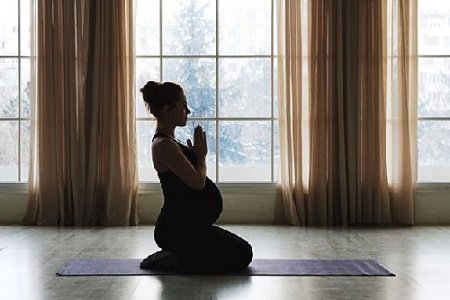
The Benefits of Prenatal Yoga
Prenatal yoga is a multifaceted approach to exercise that encourages stretching, mental centering, and focused breathing. It’s a popular method of exercise during pregnancy, known for its calming and health-promoting effects.
Research suggests that prenatal yoga can have numerous benefits for pregnant women and their babies. It can improve sleep, reduce stress and anxiety, increase the strength, flexibility, and endurance of muscles needed for childbirth, decrease lower back pain, nausea, headaches, and shortness of breath, and decrease the risk of preterm labor, pregnancy-induced hypertension, and intrauterine growth restriction — a condition that slows a baby’s growth.
Prenatal yoga can also help you meet and bond with other pregnant women and prepare for the stress of being a new parent.
Prenatal Yoga Poses
Here are some yoga poses that are particularly beneficial for expecting mothers:
Mountain Pose (Tadasana): This pose helps to improve posture, balance, and calm focus. Stand tall with feet hip-width apart, place hands on the belly, take deep breaths, and relax.
Triangle Pose (Trikonasana): This pose stretches the hips, and back, and opens the torso. Stand wide-legged, turn right foot out, stretch arms out, and gently bend to the right side, keeping both sides of the waist long.
Warrior II (Virabhadrasana II): This pose strengthens the legs and arms, opens the chest and shoulders, and tones the abdomen. Stand with feet wide apart, extend arms out to the sides, and bend the right knee, and right thigh parallel to the floor.
Bound Angle Pose (Baddha Konasana): This pose helps to open the hips and chest. Sit with knees bent, feet together, and hold feet with hands.
Legs-Up-The-Wall Pose (Viparita Karani): This pose can help to relieve swollen ankles and varicose veins. Place a cushion near a wall, sit sideways, and swing your legs up onto the wall as you lay down on your back, keeping your arms by your sides.
Remember to consult with a healthcare provider before starting any new exercise regimen, including yoga.
Creating a Pregnancy Routine with Prenatal Yoga
Incorporating prenatal yoga into your daily routine can be a rewarding experience that enhances your pregnancy and prepares your body for childbirth. Here are some tips to get started:
Choose a Convenient Time and Place: Practice yoga at a time and place that is most convenient for you. Many people find it helpful to practice yoga first thing in the morning, but if another time of day works better for you, that’s fine too.
Start with Short Sessions: If you’re new to yoga, start with short sessions of about 10-15 minutes each day. As your flexibility and stamina improve, you can gradually extend your practice time.
Listen to Your Body: It’s important to listen to your body and not push yourself too hard. If a pose feels uncomfortable or painful, adjust it or skip it completely. Remember, the goal of yoga is to feel better, not to push yourself to the point of pain or discomfort.
Include a Variety of Poses: Your yoga routine should include a variety of poses to ensure that you are stretching and strengthening all parts of your body. Be sure to include a mix of standing poses, seated poses, and relaxation poses.
End with Relaxation: End your yoga session with a period of relaxation. This could be a simple corpse pose (Savasana) or a few minutes of mindful meditation. This will help your body and mind to fully absorb the benefits of your practice.
Remember, the goal of prenatal yoga is not only to help you stay in shape but also to help you prepare for labor and promote your baby’s health. Enjoy this special time and happy practicing!
Yoga for Weight Loss
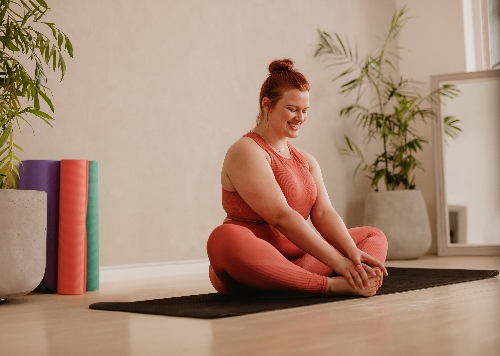
The Role of Yoga in Weight Loss
Yoga, an ancient practice rooted in Indian philosophy, is more than just a form of exercise. It’s a holistic approach to wellness that integrates physical postures, breath control, and meditation. While yoga isn’t traditionally associated with weight loss, it can indeed play a supportive role in a weight loss journey.
Firstly, yoga can help to boost metabolism. Certain yoga poses, particularly those that engage the large muscle groups, can increase heart rate and stimulate the metabolic system, helping to burn calories.
Secondly, yoga helps to build lean muscle tone. While yoga may not burn calories at the same rate as some other forms of exercise, it helps to build muscle, and muscle burns more calories than fat. The more muscle mass you have, the higher your resting metabolic rate, meaning you’ll burn more calories even when you’re not exercising.
Lastly, yoga has a significant impact on mental well-being. Regular practice of yoga can help manage stress, reduce anxiety, and improve mood – factors that are often overlooked in weight loss but are crucial. Stress and anxiety can lead to overeating or unhealthy food choices, and by managing these aspects, yoga can indirectly support weight loss.
Yoga Poses for Weight Loss
Here are some yoga poses that can support weight loss:
Warrior II (Virabhadrasana II): This pose strengthens the legs and arms, increases stamina, and stimulates the digestive system. Stand with your feet wide apart, turn your right foot out, extend your arms, and bend your right knee, keeping your left leg straight.
Boat Pose (Navasana): This pose strengthens the abdominal muscles and promotes balance and digestion. Sit on your mat, lean back slightly, lift your feet, and balance on your sit bones, extending your arms in front of you.
Plank Pose: This pose strengthens the arms, wrists, and spine, and tones the abdomen. Start on all fours, tuck your toes under, and lift your body, coming into a straight line from head to heels.
Bridge Pose (Setu Bandhasana): This pose stretches the chest, neck, and spine, stimulates abdominal organs, lungs, and thyroid, and rejuvenates tired legs. Lie on your back, bend your knees, press your feet into the floor, and lift your hips, clasping your hands underneath your body.
Remember to breathe deeply in each pose and listen to your body, adjusting the pose as needed.
Creating a Weight Loss Routine with Yoga
Incorporating yoga into your daily routine can be a rewarding experience that enhances your weight loss journey. Here are some tips to get started:
Consistency is Key: Aim to practice yoga consistently. Even a short daily practice can make a difference.
Combine Yoga with a Healthy Diet: Yoga alone may not lead to significant weight loss. Combine it with a balanced, nutritious diet to see the best results.
Listen to Your Body: Always listen to your body and modify poses as needed. Yoga should never cause pain. If a pose is uncomfortable, adjust it, or use props for support.
Include a Variety of Poses: Your yoga routine should include a mix of poses to ensure that you are working all parts of your body evenly.
Stay Hydrated: Drink plenty of water before, during, and after your practice to keep your body hydrated.
Remember, the goal of yoga is not just weight loss, but overall wellness. Enjoy the journey! Namaste.
Yoga for Lower Back Pain
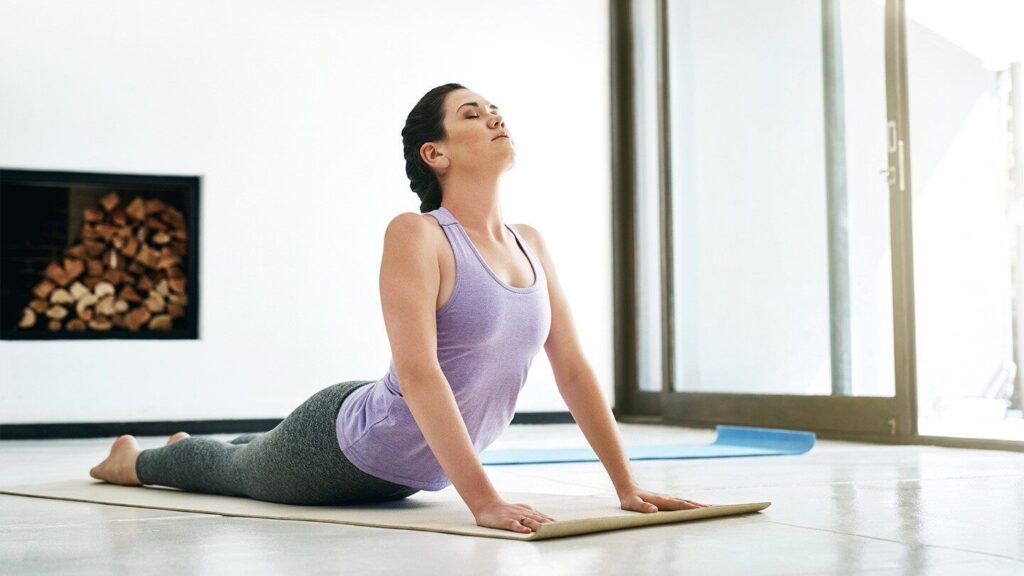
The Role of Yoga in Managing Lower Back Pain
Lower back pain is a common ailment that can be debilitating and affect the quality of life. It can be caused by various factors such as poor posture, sedentary lifestyle, and muscle strain. Yoga, an ancient practice that combines physical postures, breath control, and meditation, can be an effective tool in managing lower back pain.
Yoga poses are designed to strengthen the core, stretch the spine, and increase flexibility, all of which can help alleviate lower back pain. By strengthening the core, the body is better able to support the lower back, reducing the strain on it. Stretching the spine can help to relieve tension and promote better posture, which can often alleviate back pain.
Moreover, yoga encourages mindfulness and focused breathing, which can help to reduce the perception of pain. It allows individuals to shift their awareness away from the pain and instead focus on their breath and movement.
Yoga Poses for Lower Back Pain
Here are some yoga poses that can help alleviate lower back pain:
Child’s Pose (Balasana): This pose helps to stretch the hips, thighs, and ankles while reducing stress and fatigue. To do this pose, kneel on the floor, touch your big toes together, sit on your heels, and then separate your knees about as wide as your hips. Exhale and lay your torso down between your thighs.
Cat-Cow Pose (Marjaryasana-Bitilasana): This pose improves spinal flexibility and abdominal strength. Start on your hands and knees with your wrists directly under your shoulders, and your knees directly under your hips. Move into Cow Pose by inhaling as you drop your belly towards the mat, lift your chin and chest, and gaze up toward the ceiling. As you exhale, draw your belly to your spine and round your back toward the ceiling for Cat Pose.
Pigeon Pose (Eka Pada Rajakapotasana): This pose stretches the hip rotators and flexors. It can also help relieve sciatica and lower back pain. Begin in Downward Facing Dog. Bring your right knee between your hands, placing your right ankle near your left wrist. Extend your left leg behind you so your kneecap and the top of your foot rest on the floor.
Sphinx Pose (Salamba Bhujangasana): This gentle backbend strengthens the spine and soothes the nervous system. Lie on your stomach, legs extended behind you. Prop yourself up on your forearms, aligning your elbows under your shoulders. Press your palms and forearms into the mat, lift your chest off the floor, and keep your gaze forward.
Remember to consult with a healthcare provider before starting any new exercise regimen, including yoga.
Creating a Back Pain Management Routine with Yoga
Incorporating yoga into your daily routine can be a rewarding experience that enhances your health and well-being. Here are some tips to get started:
Consistency is Key: Aim to practice yoga consistently. Even a short daily practice can make a difference.
Listen to Your Body: Always listen to your body and modify poses as needed. Yoga should never cause pain. If a pose is uncomfortable, adjust it, or use props for support.
Include a Variety of Poses: Your yoga routine should include a mix of poses to ensure that you are working all parts of your body evenly.
Stay Hydrated: Drink plenty of water before, during, and after your practice to keep your body hydrated.
Combine Yoga with a Healthy Lifestyle: Along with regular yoga practice, maintain a healthy lifestyle. Eat a balanced diet, get enough sleep, and try to manage stress effectively.
Remember, the goal of yoga is not just to relieve pain, but to cultivate a sense of overall well-being. Enjoy the journey! Namaste.
Conclusion
As we conclude this comprehensive guide on yoga, it’s important to reflect on the journey of yoga from its humble beginnings to its current global popularity. Yoga, an ancient practice rooted in Indian philosophy, has transcended cultural and geographical boundaries to become a universally accepted path to wellness.
From the simple yet profound Mountain Pose to the more challenging Warrior II, each yoga pose offers unique benefits that contribute to our physical health and mental well-being. Whether it’s improving flexibility and strength in beginners, providing stress relief, aiding seniors in healthy aging, supporting expecting mothers during pregnancy, assisting in weight loss, or alleviating lower back pain, yoga has something to offer everyone.
The beauty of yoga lies not just in the physical postures but in the harmony it brings about between the mind, body, and spirit. It teaches us mindfulness, patience, and acceptance, qualities that are invaluable in today’s fast-paced world.
Looking forward, yoga’s relevance in promoting health and wellness is only expected to grow. As more and more people seek holistic and sustainable ways to maintain health and wellness, yoga is likely to remain a preferred choice.
Future trends in yoga might see a greater integration of technology, with virtual yoga classes becoming more commonplace. This would make yoga more accessible to people regardless of their location. Additionally, there might be a greater emphasis on therapeutic yoga, targeting specific health issues.
However, no matter how yoga evolves, its core essence will remain the same – a practice that unites the body, mind, and spirit, leading to a state of peace and harmony. As we continue to navigate the complexities of life, yoga provides a beacon of light, guiding us toward health, happiness, and inner peace.
In conclusion, whether you’re a beginner embarking on your yoga journey, or an experienced practitioner deepening your practice, remember that every step on the path of yoga is a step towards better health, greater peace, and a deeper understanding of yourself and the world around you. Namaste.
Frequently Asked Questions About Yoga
1. How do I start practicing yoga at home?
Starting yoga at home can be a rewarding experience. Begin with setting up a quiet, well-ventilated space in your home. Choose a time that suits you best, usually early morning or late evening is preferred. Start with short sessions and gradually increase the duration as your flexibility and stamina improve.
2. What are some beginner-friendly yoga poses?
Some beginner-friendly yoga poses include Mountain Pose (Tadasana), Downward-Facing Dog (Adho Mukha Svanasana), Warrior II (Virabhadrasana II), Tree Pose (Vrikshasana), and Bridge Pose (Setu Bandhasana). These poses help improve flexibility, strength, and balance.
3. How does yoga help in stress relief?
Yoga helps in stress relief by promoting relaxation and reducing tension. It incorporates physical postures, breath control, and meditation, which work together to relax the body, calm the mind, and enhance mood. Regular practice of yoga can help reduce stress levels, improve mood, and enhance overall quality of life.
4. What are some yoga poses for stress relief?
Some effective yoga poses for stress relief include Child’s Pose (Balasana), Cat-Cow Stretch (Marjaryasana-Bitilasana), Standing Forward Bend (Uttanasana), and Corpse Pose (Savasana). These poses help to release tension in the body and calm the mind.
5. What are the benefits of yoga for seniors?
Yoga offers numerous benefits for seniors. It enhances flexibility, strength, and balance, which can help prevent falls. It also promotes cardiovascular health, aids digestion, and improves sleep patterns. Mentally, yoga can help seniors deal with feelings of anxiety and depression.
6. What are some yoga poses for seniors?
Some yoga poses beneficial for seniors include Chair Pose (Utkatasana), Warrior II (Virabhadrasana II), Tree Pose (Vrikshasana), and Legs-Up-The-Wall Pose (Viparita Karani). These poses help improve balance, strengthen the legs, and instill confidence.
7. What are the benefits of prenatal yoga?
Prenatal yoga can improve sleep, reduce stress and anxiety, increase the strength, flexibility, and endurance of muscles needed for childbirth, decrease lower back pain, nausea, headaches, and shortness of breath, and decrease the risk of preterm labor, pregnancy-induced hypertension, and intrauterine growth restriction7.
8. What are some prenatal yoga poses?
Some prenatal yoga poses include Mountain Pose (Tadasana), Triangle Pose (Trikonasana), Warrior II (Virabhadrasana II), and Bound Angle Pose (Baddha Konasana). These poses help improve balance, strengthen the legs, and create space in the belly.
9. How does yoga support weight loss?
Yoga supports weight loss by boosting metabolism, building lean muscle tone, and promoting mindfulness. Certain yoga poses, particularly those that engage the large muscle groups, can increase heart rate and stimulate the metabolic system, helping to burn calories.
10. What are some yoga poses for weight loss?
Some yoga poses for weight loss include Warrior II (Virabhadrasana II), Boat Pose (Navasana), Plank Pose, and Bridge Pose (Setu Bandhasana). These poses help strengthen the core, stretch the spine, and increase flexibility.
11. How does yoga help manage lower back pain?
Yoga helps manage lower back pain by strengthening the core, stretching the spine, and increasing flexibility. By strengthening the core, the body is better able to support the lower back, reducing the strain on it. Stretching the spine can help to relieve tension and promote better posture, which can often alleviate back pain.
12. What are some yoga poses for lower back pain? Some yoga poses for lower back pain include Child’s Pose (Balasana), Cat-Cow Stretch (Marjaryasana-Bitilasana), Pigeon Pose (Kapotasana), and Sphinx Pose (Salamba Bhujangasana). These poses help to release tension in the body and calm the mind.
Similar Topics
What Do Women Want from Men?
Seeking a fulfilling relationship? Discover the core values & hidden desires women want from men, with actionable tips to put…
Acid Reflux: Effective Strategies for Relief and Prevention
Are you experiencing acid reflux pain? You are not alone yourself. Millions of individuals worldwide suffer from this common yet…
Discover The Power of Simplicity with Weekend Lectures
For a decade, we’ve been curating stories that encourage simplicity, providing a shelter for individuals looking to live a more…
Physical activity protects breasts from cancer before menopause
A look at ‘Physical activity protects breasts from cancer before menopause’ For women navigating the years before menopause, a new…
Understanding 5 Types of Fatigue in 2024
Fatigue, often dismissed as a fleeting concern, is more nuanced than a simple remedy of a short nap or a…
Drinking Water – A Lifesaving Elixir
Drinking water is often underestimated, but a groundbreaking study by the National Institutes of Health (NIH) reveals its profound impact…
